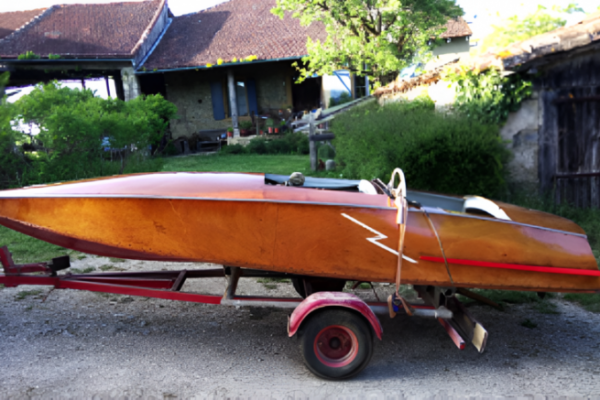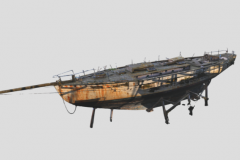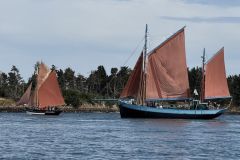In the 1960s, owning a boat was a sign of social affluence and success. However, in the small village of Vélines in the Dordogne, a passionate mechanic chose a different path: rather than buy a mass-produced runabout, Georges Cavard designed a boat with his own hands. Today owned by yachting historian Daniel Charles, this model illustrates the dexterity of craftsmen and the mechanical ingenuity of an era when people dared to create without following pre-established models.
An empirical but meticulous approach
Born in Angoulême in 1907, Georges Cavard trained as a mechanic. Between the wars, he distinguished himself on the racetrack at the wheel of a Bugatti. After the war, he developed a thriving garage in Vélines, in the Dordogne department of the Nouvelle-Aquitaine region. With economic growth in the late 1950s, the acquisition of a motorboat, in the same way as a car, became a symbol of social advancement. However, instead of taking the easy way out by buying a production model (Rocca, Matonnat or Kirié...), Cavard decided to build his own boat, empirically, without training as a naval architect, but with all the rigor of an engineer. To design the hull lines, he made several models from poplar wood, the same used for the crates in the local orchards. Using "rubber motors", simple propellers driven by a rubber band, he tests the shapes on a pond, observing the behavior of the scale models. His objective is clear: to achieve perfect trim at full speed. The approach, which may seem rudimentary, reveals an instinctive understanding of the laws of hydrodynamics.

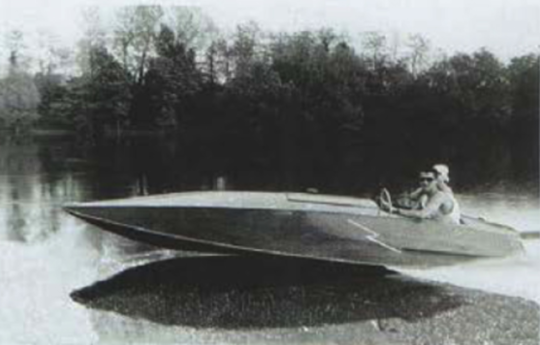
The Cavard runabout has a slim, sleek silhouette: 4.65 meters long and only 1.32 meters wide. At the bow, the flared V-shaped hull cuts through the chop with efficiency. At the stern, the hull flattens out completely, guaranteeing rapid planing and low drag. A prominent, full-length keel provides invaluable directional stability. The forward-plunging deck enhances the pilot's visibility, especially when pitching up under acceleration.
This hull, built from plywood on sawn frames, is intelligently reinforced where stresses require, notably at the stern, the planing area. The 6 mm thick planking illustrates the quest for lightness. No frills: no cushions, no aesthetic finishes. The Cavard is a Spartan performance-oriented boat. With a total weight of 250 kg including engine, it achieves a power-to-weight ratio of 3.2 kg per horsepower, which is exceptional for its time.

The ingenuity of System D
The artisan shipyard goes beyond simple hull construction. Cavard and his sons fabricate everything that can be fabricated. The hood incorporates an air intake cut from a Panhard bumper. The gas pedal follows the same principle. Even the propeller is homemade, assembled by welding. The engine is a Simca Flash 4-cylinder with twin Weber carburetors. The powertrain is as lean as possible: the Simca gearbox is stripped of all unnecessary cogs, leaving only direct drive and reverse. The on-board equipment is all cleverly salvaged: oil pressure gauge from a Hotchkiss, Simca steering wheel, automotive fuel tank of uncertain origin. The trailer, meanwhile, is made from a Panhard axle. On the runabout's transom, the nameplate is simply painted.
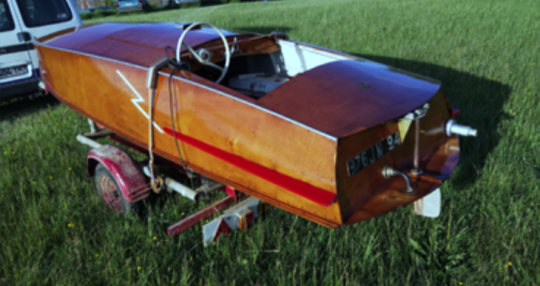
A boat built for speed... and the river
Optimized for speed, the Cavard is limited to freshwater. The absence of a heat exchanger means that it cannot be sailed at sea, as salt water could irreparably damage the cooling system. On the Dordogne and its tributaries, the boat is a sensation. Easy to handle and as lively as a go-kart, it entertained the Cavard family for a dozen years. But it was unforgiving: an overweight passenger caused a spectacular capsize at Castillon-la-Bataille, proving the stability limits of such a narrow hull. The only modification: the original propeller was replaced, as its low efficiency did not meet speed requirements.
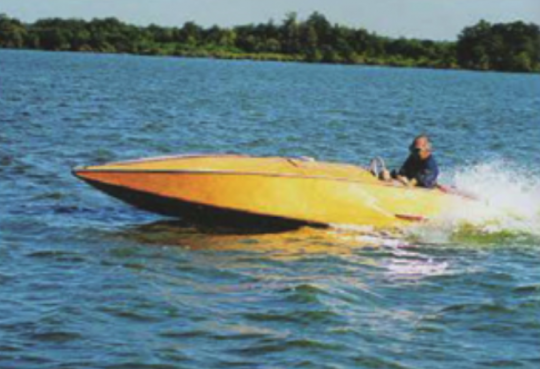
The legacy of a yachting masterpiece
The Cavard runabout was never designed for competition. Intended for recreational use, it nevertheless represents the personal achievement of its creator. Kept in the showroom of the family garage, the boat was discovered in 1992 by a member of the Conservatoire de la Plaisance de Bordeaux. And so it began a new life as a rare witness to popular know-how. Today, it belongs to yachting historian Daniel Charles, who preserves it with particular care.

The Cavard's restoration was carried out as closely as possible to her original condition. Daniel Charles chose quality varnishes, without seeking to achieve a mirror finish, in order to preserve the boat's authentic appearance.
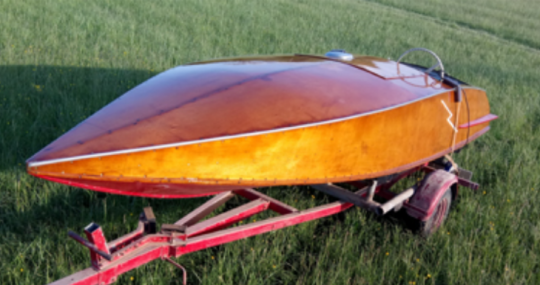
Repairs to damaged parts have been carried out in a visible manner, allowing the original elements to be distinguished from recent interventions. Adjustments were made for safety reasons, including the installation of a fire extinguisher aimed at the dual carburettor. The electrical system has been refurbished and all the flexible piping replaced to ensure optimum functionality. The steering wheel, although obsolete, was replaced by a similar vintage model.
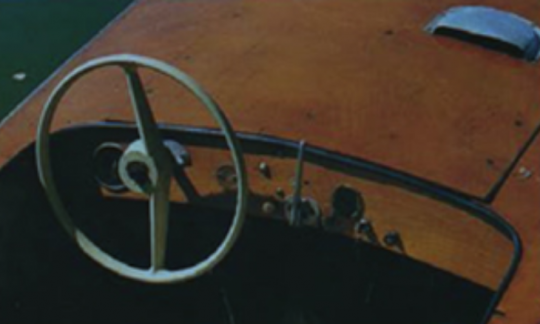
Listed alongside its design model as a Monument Historique, the Cavard is today the only runabout to be so listed, making it an emblematic piece. This preservation initiative has made it possible to enhance the value of an often-neglected heritage through a theoretical approach that is still rare in this field. What does this boat represent in the history of yachting? What role does it play in the development of nautical techniques and the preservation of traditional craftsmanship? In his book Classic boating passions daniel Charles devotes an entire chapter to the Cavard, highlighting its place in the history of yachting.
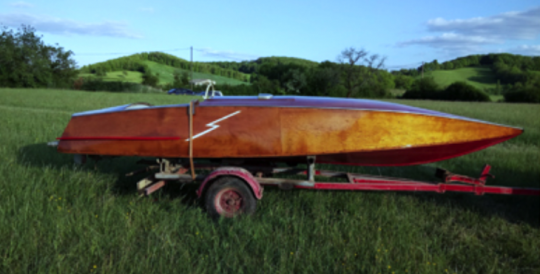

 /
/ 